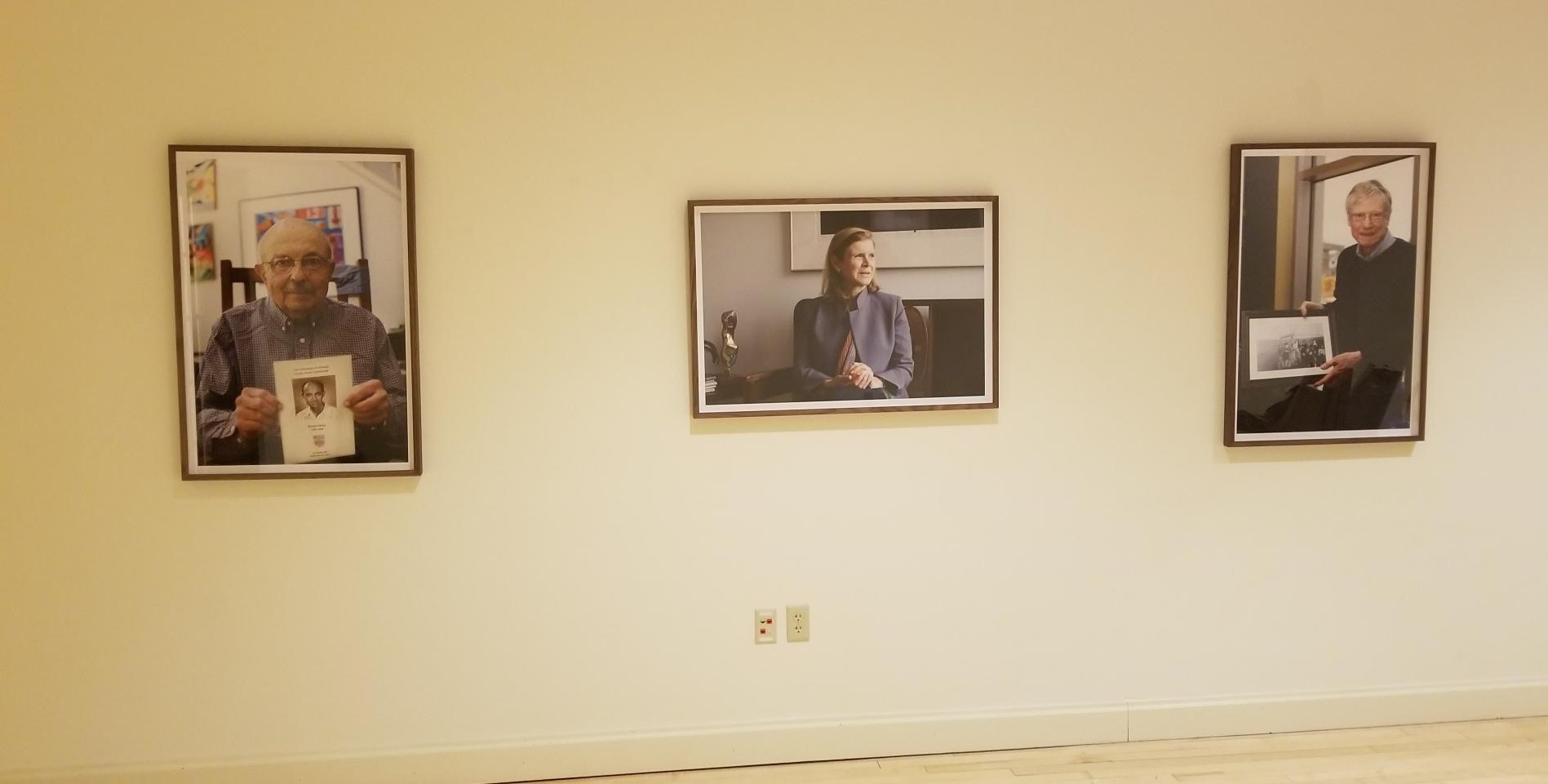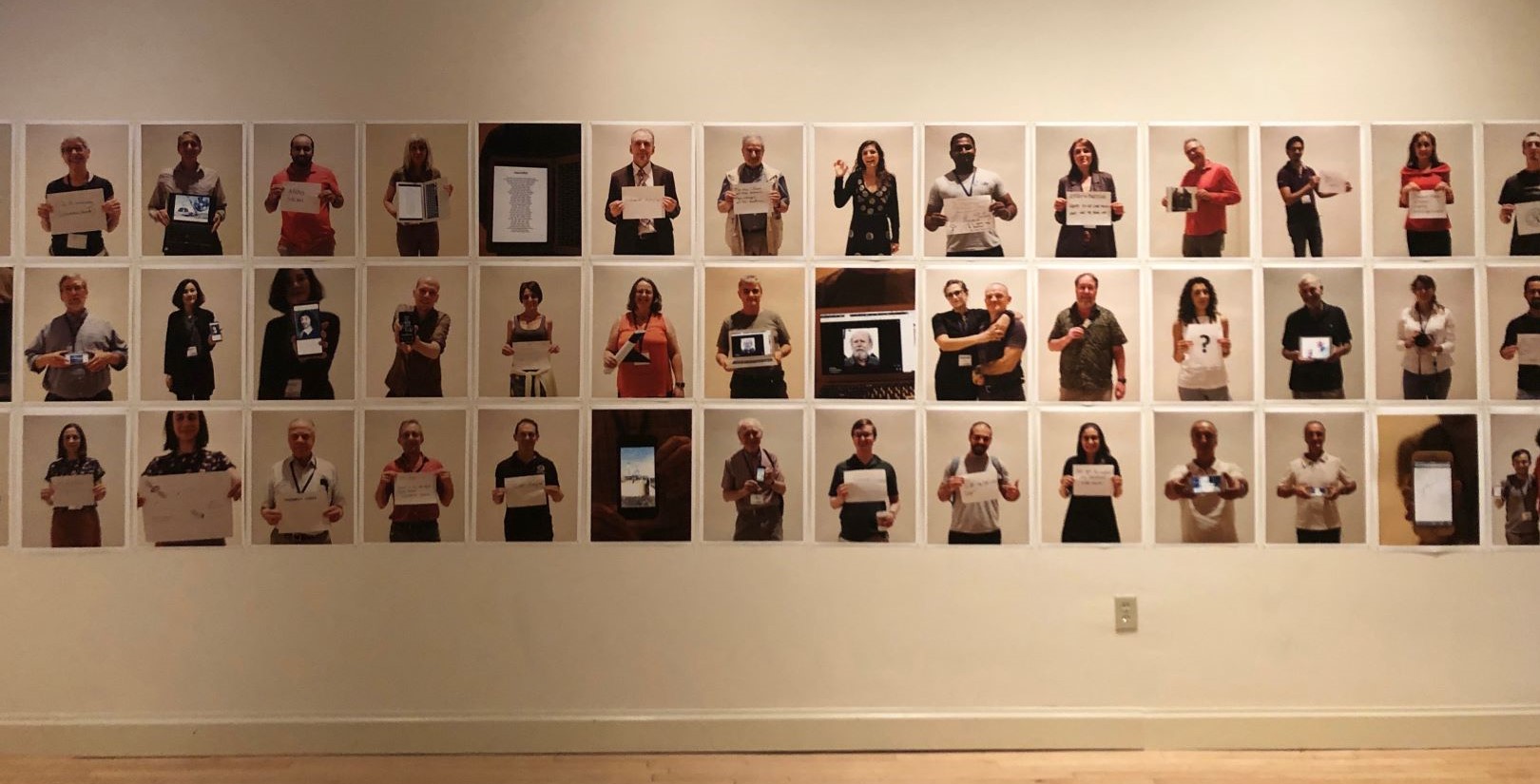Mention the word “neutrino” to the casual observer and chances are they will look at you with interrogation in their face. They might have a fuzzy idea that this is an elementary particle, but they probably won’t know why it is important, who studies it, or where and how. This is why any initiative to engage all segments of society in alternative approaches to contemplating cosmic ray research is a welcome one.
Art is perhaps one of the greatest vehicles to do this. According to Dr. Dave Featherstone, a neurology professor at the University of Illinois, “Art and science are more closely related than one would care to think because both strive to understand and describe the world, and both do it in new ways. Scientists do experiments over and over and over, trying to pin down some new aspect of reality. Once they have their new understanding, there are pre-arranged traditional modes of communication that make that part easier. Artists often start with the new vision, then work through ‘periods’ in which they explore how best to get the message across. They have shows. They seek feedback to help them understand what works.”
And when art and science join forces, wonderful things happen.
Proof of that is the exhibit Messages, currently on display at the UW–Madison Memorial Union Gallery, an initiative of the IceCube Neutrino Observatory education and outreach team to celebrate the 2019 International Cosmic Ray Conference. As the curators put it, “Messages poetically describes a place without boundaries—where artists find inspiration.”

It consists of two original installations that invite the audience to discover, observe, interact, and reflect on the science of the elusive neutrinos and the nature of our universe. One of the segments, Messages from the Horizon, curated by Canadian computational artist Mark-David Hosale and UW-River Falls physics professor Jim Madsen, is a lovely combination of light and sounds, kinetic structures and embedded computers with custom electronics, to explore what we know about the Universe and how we know it.
According to Hosale, “The abstract experience of this installation can be understood as an exploration of our relationship to the Universe by simultaneously celebrating human achievement and the existential limitations of our being.”
The second half of the exhibit, Event Horizon, consists of a series of portraits taken by British artist Faisal Abdu’Allah with Maryam Ladoni, in which scientists are holding objects that inspired their careers.

“Event Horizon is a public art collaboration that seamlessly illustrates the relationship between art and the sciences,” writes Abdu’Allah. “Three eminent professors—Gaurang Yodh [who passed away days before the show opened], Thomas Gaisser, and Angela Olinto—were asked to think of an object or photograph that inspired them to pursue a career in the sciences and were documented holding the object in the palm of their hands in a generous act of sharing.”
Then, through the course of the show, additional images were placed in the gallery of ICRC attendees holding their own objects of inspiration. This kind of interaction is what art does best, as it elicits the audience’s interest and response, and through it, the beginning of an intellectual odyssey.

“Artists and scientists often need to invent new concepts and technologies to accomplish their goals,” says Dr. Featherstone. “Both science and art have useful spin-offs. Applied science is technology. Applied art is decoration. Technology and decoration are applications of science and art for practical purposes—they make life easier. But they don’t change how we fundamentally perceive what is around us. Science and art do.”
Angela Posada Swafford is a recognized science writer and journalist. She presented a communication workshop at the 2019 spring IceCube Collaboration meeting in Madison, WI.
Arte y ciencia: un lugar sin fronteras
Mencione la palabra “neutrino” al observador casual, y es probable que lo miren con un signo de interrogación en la cara. Es posible que tengan una idea confusa de que esta es una partícula elemental, pero probablemente no sabrán por qué es importante, quién la estudia, dónde y cómo. Esta es la razón por la cual cualquier iniciativa que acuda a enfoques alternativos para involucrar a todos los segmentos de la sociedad en la ciencia de los rayos cósmicos es bienvenida.
El arte es quizás uno de los mejores vehículos para hacer esto. Según el Dr. Dave Featherstone, profesor de neurología en la Universidad de Illinois, “el arte y la ciencia están más estrechamente relacionados de lo que a uno le gustaría pensar porque ambos se esfuerzan por comprender y describir el mundo, y ambos lo hacen de formas novedosas. Los científicos hacen experimentos una y otra y otra vez, tratando de precisar algún aspecto nuevo de la realidad. Una vez que tienen su nuevo entendimiento, se valen de modos de comunicación tradicionales preestablecidos que hacen que esa parte sea más fácil. Los artistas a menudo comienzan con la nueva visión, luego trabajan en “períodos” en los que exploran la mejor manera de transmitir el mensaje. Hacen exhibiciones y buscan retroalimentación para ayudarles a entender lo que funciona.”
Pero cuando el arte y la ciencia se unen, suceden cosas maravillosas.
Prueba de ello es la exposición Mensajes, actualmente en exhibición en la UW–Madison Memorial Union Gallery, una iniciativa del Equipo de Educación y Difusión del Observatorio de Neutrinos IceCube para celebrar la Conferencia Internacional de Rayos Cósmicos 2019. Como dicen los curadores, “los mensajes describen poéticamente un lugar sin fronteras, donde los artistas encuentran inspiración.”
La exposición consiste en dos instalaciones originales que invitan a la audiencia a descubrir, observar, interactuar y reflexionar sobre la ciencia de los elusivos neutrinos y la naturaleza de nuestro universo. Uno de los segmentos, Mensajes desde el Horizonte, curado por el artista computacional canadiense Mark-David Hosale junto con James Madsen, profesor de física en la UW-River Falls, es una combinación encantadora de luz y sonidos, estructuras cinéticas y computadoras integradas con electrónica personalizada, para explorar qué sabemos sobre el universo, y cómo hacemos para saberlo.
Según Hosale, “la experiencia abstracta de esta instalación puede entenderse como una exploración de nuestra relación con el universo al celebrar simultáneamente los logros humanos y las limitaciones existenciales de nuestro ser.”
La segunda mitad de la exposición, Horizonte de Eventos, consiste en una serie de retratos realizados por el artista británico Faisal Abdu’Allah con Maryam Ladoni, en la que una serie de científicos sostienen objetos que inspiraron sus carreras.
“Horizonte de Eventos es una colaboración de arte público que ilustra a la perfección la relación entre el arte y las ciencias,” escribe Abdu’Allah. “A tres profesores eminentes, Gaurang Yodh (que falleció días antes de que se inaugurara el programa), a Thomas Gaisser y a Angela Olinto, se les pidió que pensaran en un objeto o una fotografía que los inspiró a seguir una carrera en las ciencias y se documentó ese objeto en la palma de sus manos en un generoso acto de compartir.”
Luego, durante el transcurso del espectáculo, se colocaron en la galería imágenes adicionales de los asistentes de la Conferencia que quisieron también compartir sus propios objetos de inspiración. Este tipo de interacción es lo que el arte sabe hacer mejor, puesto que es un proceso que provoca el interés y la respuesta de la audiencia y, a través de ella, el comienzo de una odisea intelectual.
“Los artistas y los científicos a menudo necesitan inventar nuevos conceptos y tecnologías para lograr sus objetivos,” dice el Dr. Featherstone. “Tanto la ciencia como el arte tienen beneficios derivados. La ciencia aplicada es tecnología. El arte aplicado es la decoración. La tecnología y la decoración son aplicaciones de la ciencia y el arte con fines prácticos: facilitan la vida. Pero no cambian la forma en que percibimos fundamentalmente lo que nos rodea. En cambio, la ciencia y el arte sí lo hacen.”
Angela Posada Swafford es una reconocida escritora y periodista científica.
